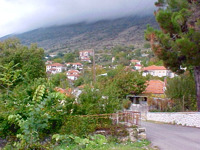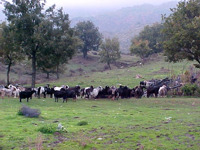Pogoniani and the nearby villages
Pogoniani is located at the northwest part of the region of Pogoni at an altitude of 750 metres, near Delvinaki. During the Ottoman period it was the adminitrative centre of the part of Avlona of the Ottoman Empire and and the seat of the bishopric till 1863.
Pogoniani was an important commercial centre during the past years which is obvious to the old buildings and to the centre of the community that once it was an impotant trading centre of more than 60 shops. ΣIn Pogoniani nowadays there are boarding schools and educational institutions for the homogeneous people of North Epirus that they were built by donations.
In Pogoniani worths visiting:
- The interesting Folk Art Museum of Pogoni – Deropoli
- The church of big dimensions of St. Nicolas (1873) with its exceptional wooden iconostasis
- The thick forests of the area around, which attract many hunters but also many lovers of nature.
Other villages in the region:
Dolo is a traditional village of Pogoni. Nearby the viilage there is the famous gorge of Kouvaras, into which runs the homonymous river. You can cross it by following the marked path.
At the beggining of the gorge, at the location of Ksylogefiro, there is a watermill and a small stone-built bridge, known as the “bridge of Nonoulo”.
Significant is also the church of St. Nicolas that is located at the village. It has a big hall and incorporated belltower of two zones at its south side. The older wall paintings of the church are creations of the painter Kouros from Dolo.
Kakkolakos village is located at the foothill of the mountain of Nemertsika at the north part of the region of Pogoni. It was the capital city of Pogoni during the Ottoman period.
Here it was also the administrative centre of Markos Botsaris from Souli from 1814 to 1820. The family of Botsaris funded the construction of the wooden iconostasis of the church of St. Dimitrios.






